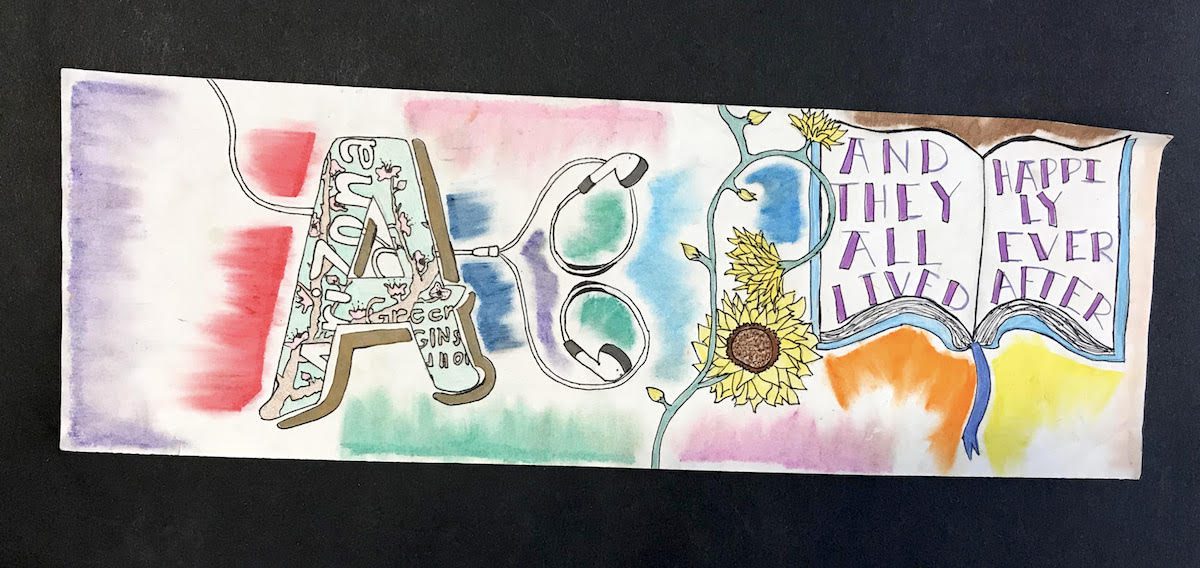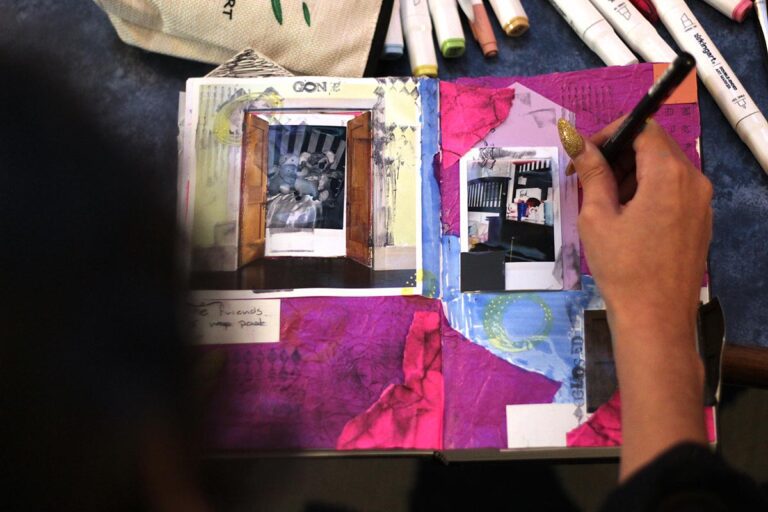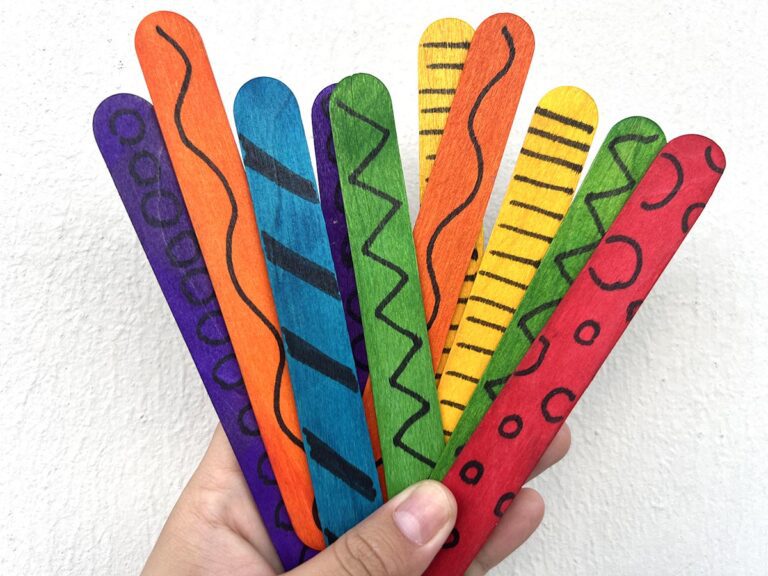After working at the elementary level for fourteen years, I moved to the high school arena. From day one, I realized my high school kiddos were very similar to my elementary kiddos. I began to wonder if their art lessons could be similar as well. Here’s what I found out.
First, I realized all kids love stickers, candy, and positive affirmations for a job well done. Second, I realized the key to the success of an art program often lies in the first few lessons. It’s our job to guide our students and teach them the tools and techniques necessary to help them become the artists they aspire to be.
The Name Design Lesson is the perfect lesson for all grade levels and can start the year off right!
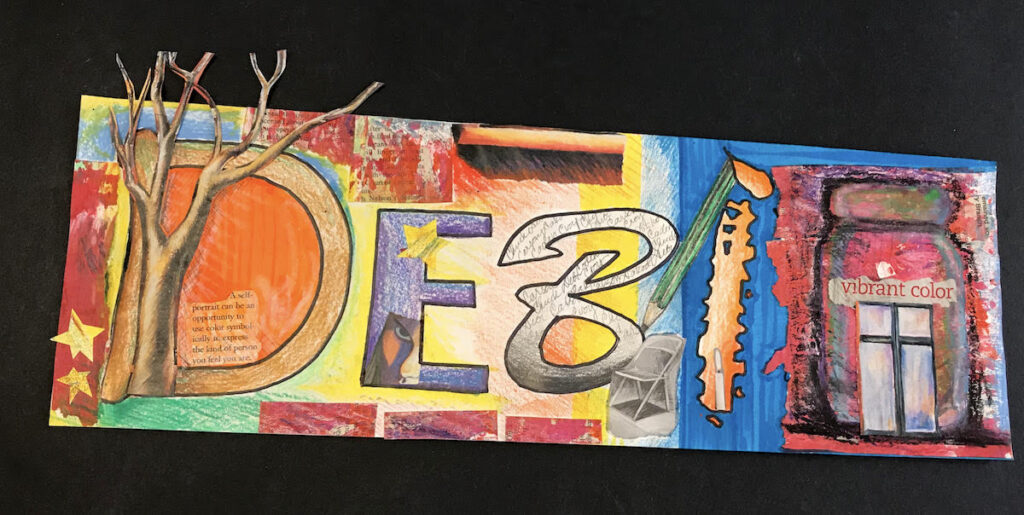
This lesson is wonderful on many levels. To start, it will help you learn your students’ names. At one point, I taught over 1300 students. That is a lot of names to remember! Being a visual learner, this lesson helped me recall many of those names early on.
This lesson also helps you get to know each student’s preferences, hobbies, and personalities. Perhaps most importantly, it gives you the opportunity to teach your students the many tools of art right from the start and to see where their individual strengths lie.
Here are 8 steps to teaching the Name Design Lesson and what students will learn along the way.
Materials
Before we jump into the steps, here is what your students will need for this lesson.
- 6″ x 12″ drawing paper
- Pencils
- A variety of wet and dry media
- Magazines
- Scissors
- Glue
- Computer and printer (optional)
1. Create a mind map.
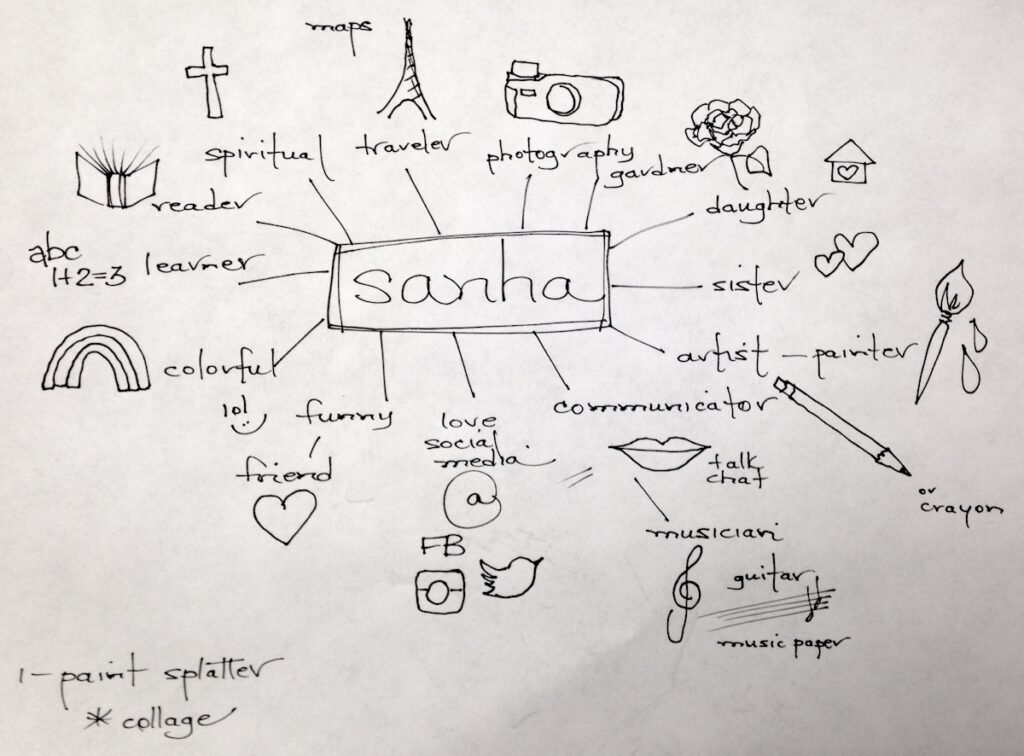
Teach students to brainstorm and think creatively by having them create a simple mind map about themselves. Have them start with their name in the middle. Then, have them map things like hobbies, interests, and passions. Once they’ve written down their words, have them come up with an interesting symbol for each.
2. Using the mind map as a starting point, begin to create the name.
Once students have come up with symbols to describe their interests and likes, have them creatively incorporate these symbols into their name. They can create the actual letters or use the negative space to create the letters. In this way, they must think about the importance of composition.
3. Highlight helpful tools.
This lesson is a perfect time to teach students about the media and tools needed to be successful artists. For example, if students are worried their handwriting is sloppy or messy, show them how they can print out enlarged fonts from the computer to trace or collage onto their piece.
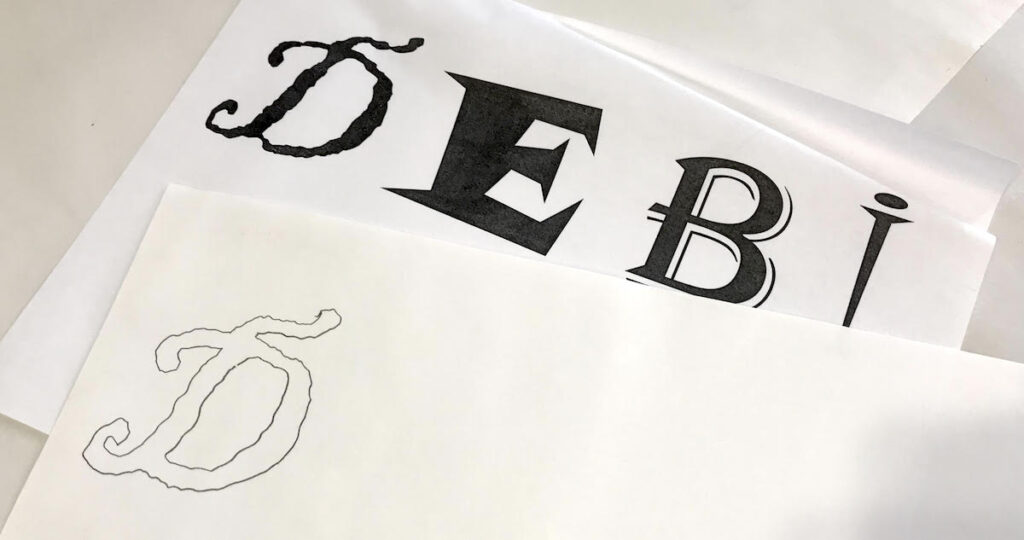
4. Demonstrate collage techniques.
You can also teach students about the value of the images found within the pages of everyday magazines. Be sure to emphasize the importance of cutting and gluing neatly when collaging. When students have the freedom to collage, they don’t feel as pressured to draw perfectly.
5. Have students practice drawing from life.
Teach students about the importance of drawing from life and researching the images in which they are interested. This takes their art to a whole new level.
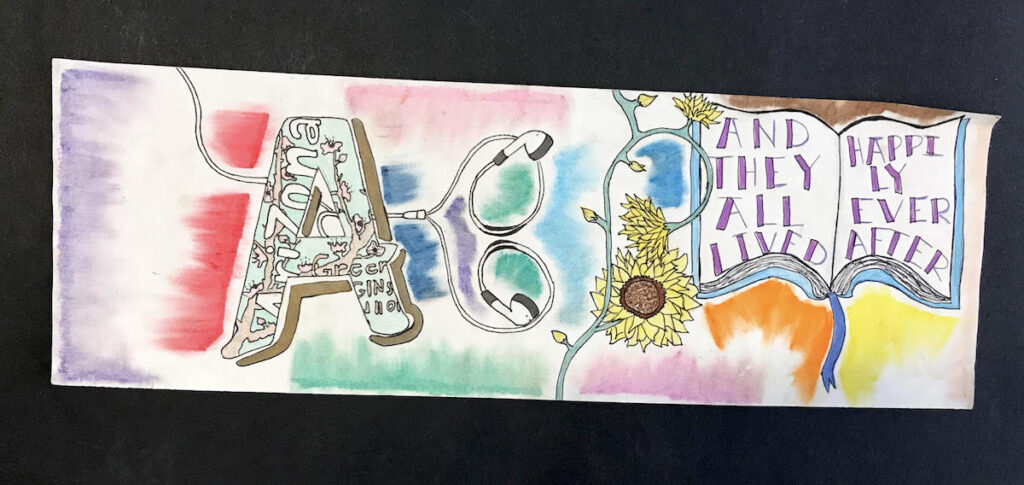
6. Encourage students to use a variety of media.
This lesson is also a great way to teach students how to experiment with various mediums. For example, I show them how to paint with markers, layer colors with crayons or colored pencils, and create a variety of line quality with drawing pens. I model how to use gradation in their graphite drawings, adding value and showcasing light sources.
7. Emphasize craft.
In my mind, one of the most important things this lesson teaches students is how to care about their art and the marks they make. It’s a great reminder that craftsmanship is an important part of the creative process.

8. Mount finished pieces for display.
To finish this lesson, I teach students how to mount their pieces and label them for exhibition. Then, we hang every piece in class exhibits that introduce our students to the school!
At the end of this lesson, students have experienced and learned how to manipulate a wide variety of wet and dry media. In addition, they have made artistic decisions based on their experimentation to create a cohesive, composed name design. They are always amazed at how well their first art project turned out because they learned the value of planning and taking the time to create and experiment. In the end, this lesson teaches students the power of their artistic voices.
Do you think the first art lesson of the school year is important?
What lessons do you teach your students early on and why are they successful in setting your students up for a successful year of art?
Magazine articles and podcasts are opinions of professional education contributors and do not necessarily represent the position of the Art of Education University (AOEU) or its academic offerings. Contributors use terms in the way they are most often talked about in the scope of their educational experiences.
